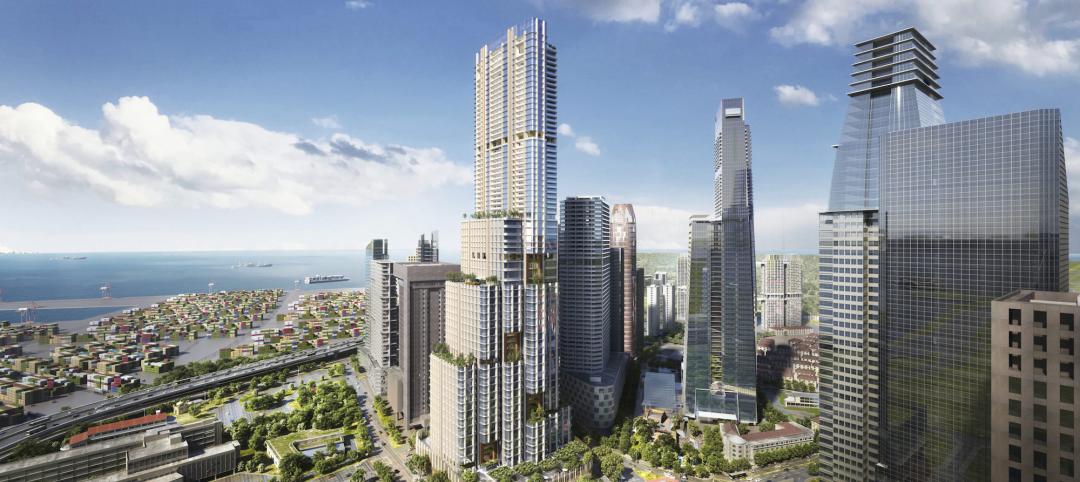1. Ask the hard bottom-line questions first. What is the objective of renovating the building or interior space? Why do it now? What’s the win for the client? What’s the client’s pain point? Who will occupy the space? How will they use it? How will value ultimately be accessed? How can capital investment be minimized and property value maximized? What are the physical and economic barriers to success?
More questions to ponder: Do the existing spaces accommodate the needs of today’s tenants or occupants well? Conversely, does a less than up-to-date facility make this level of change impractical and cost-prohibitive? Are corporate sustainability goals driving the decision to renovate?
Only after you’ve done your homework on these “critical success factors” (which will differ from one job to the next, of course) can you determine if you can produce a successful project for your client.
2. Take a realistic look at the surrounding neighborhood. What “value-perceived” amenities are present today that were not in place when the property first came on the market? “It may be new restaurants, shops, a health facility, or new bus line,” says McCafferty. “In one case, the trees in the area had matured, and they became a huge draw for the project.”
3. Look for local or regional economic incentives. Second-generation buildings may sometimes be offered local tax or financing incentives, particularly deferred property taxes. “Always look for economic development incentives,” says McCafferty. “If they’re available, why shouldn’t your client benefit?”
“In today’s climate, communities are in competition for jobs, jobs, jobs,” says Hudson. “If a building renovation project can attract jobs, you should help your client find those incentive programs and packages.”
4. Develop an exit strategy for the property. What is the highest and best use for the property? If you were to convert the building for adaptive reuse, what would be the best solution for the corporation or a potential buyer? If possible, consider making improvements that will add value later. For example, in a single-owner building renovation, see if adding an appropriately located staircase would allow the building to be converted to multi-tenant use in the future, should the current owner’s business model call for such a change.
5. Create a communication plan for the current occupants. You need to manage tenant expectations by letting the current occupants know about the work schedule—when you’ll be renovating the lobby and the restrooms, what they should expect to see in terms of new finishes or wall coverings, what the plans are for improved lighting, and so on.
6. Capitalize on the building’s strengths. What features made the building attractive when it was brand new? Reframe those strengths to give the property the best possible positioning for today’s market conditions.
“Look at the structure of the building. Does it have good bones?” says McCafferty. “Can you take some walls down to allow more daylight into interior spaces? If it’s a building with eight-foot ceilings, can you do something to increase the floor-to-ceiling height?”
Mirrielees recalls one of Hixson’s biggest reconstruction projects, the headquarters of a Fortune 100 company in downtown Cincinnati. “It’s a triangular building with phenomenal views, but the only ones who could see them were the managers in the private offices. By opening the space, it gave everyone views from almost every direction, and that increased the value of the building.”
7. Determine what features can and should be saved. Prioritize the systems and features that need to be updated. Obviously, each one of these listed items has a cost to the owner/developer on the one hand and a potential value to the future end user/lessee on the other.
“We were renovating a 1970s high-rise in a downtown area with an air exchange rate of nine cfm, which was totally unacceptable, of course,” says Mirrielees. “We used the abandoned mail chutes in the building as vertical shafts to increase the air exchange rate to 20 cfm.”
If mechanical units, system controls, and lobby lighting have recently been replaced or updated, investigate the possibility of seeking an Energy Star rating, which signifies that the building’s energy consumption is below the standard for buildings of its type and size. This tells potential occupants or tenants they can expect generally lower utility expenses than in a conventional building.
8. Enhance the property’s curb appeal and interior finishes. First impressions are crucial to the salability of the finished project. What features make the building memorable from the outside—landscaping, aesthetic appeal, underground executive parking? McCafferty says it’s usually cost-effective to freshen up your signage. For multi-tenant office campuses, planting seasonal flowers and changing them out frequently can attract tenant interest.
Inside, it’s almost always worthwhile to refresh finishes and graphics. Reasonably priced and up-to-date finishes in elevator cabs, toilet rooms, and lobbies are essential. In other common areas, new finishes such as carpet colors and patterns, paint colors, and even ceiling tiles can help freshen and update the property.
9. Have a clear picture of who the potential tenants might be, and design for their needs. “Attorneys still haven’t come out of their private offices, with good reason,” says Mirrielees. “Call centers get you into HVAC issues, because you have so many people per square foot and existing systems just can’t handle the load. Plus, they’re looking for lots of daylighting, parking, and even restrooms.”
Mirrielees says most corporate space is going to 75% open plan, 25% closed office. But that, too, may depend on the type of client, says McCafferty. “When you have a younger company or one that has a lot of Gen Xers or Millennials, they want more open space and daylighting,” she says. “We’ve converted warehouse/manufacturing spaces to office/R&D uses where everyone in the company has the same kind of space and furniture.”
10. Don’t try to do everything at once. Consider a multi-step, phased redesign, rather than tackling the entire property at once. A phased plan provides flexibility in cash flow and financing and greater variety in lease agreements, which can reduce financial risk to the owner or developer.
“If you have only so many dollars to spend, look for the biggest bang for the buck,” says McCafferty. “Do your core spaces and bathrooms with nice finishes—that speaks to all tastes.”
In one case where Hixson converted a distribution center into a corporate office building and R&D center, the client had a clear vision of what to do first. “They did the cafeteria early because everyone was going to use it,” recalls Mirrielees. “That’s a typical corporate scenario.”
For leased space, Hudson recommends against prepping the space for a single tenant or even for a single type of tenant. Instead, set those funds aside for future improvements.
11. Make sustainability part of the process. Achieving LEED certification may not be your client’s goal for the project, but including sustainable elements where feasible usually makes good business sense. “We’re doing more Energy Star buildings than LEED buildings,” says Mirrielees. “We’ve found Energy Star to have more of a return on investment and to be more attainable than LEED-EB.” Whatever the case, an appropriate sustainability message may get your building on the leasing agents’ latest “properties to visit” list.
Looking at the current market for office space, McCafferty acknowledges that property owners are being even more cautious than usual about capital expenditures. “The trend right now is to hold onto your money,” she says. But with labor and materials at favorable prices, she says, now may be the best time to encourage building owners to invest in reconstruction.
Related Stories
Mechanical Systems | Jan 17, 2023
Why the auto industry is key to designing healthier, more comfortable buildings
Peter Alspach of NBBJ shares how workplaces can benefit from a few automotive industry techniques.
Government Buildings | Jan 9, 2023
Blackstone, Starwood among real estate giants urging President Biden to repurpose unused federal office space for housing
The Real Estate Roundtable, a group including major real estate firms such as Brookfield Properties, Blackstone, Empire State Realty Trust, Starwood Capital, as well as multiple major banks and CRE professional organizations, recently sent a letter to President Joe Biden on the implications of remote work within the federal government.
Sustainability | Jan 9, 2023
Innovative solutions emerge to address New York’s new greenhouse gas law
New York City’s Local Law 97, an ambitious climate plan that includes fines for owners of large buildings that don’t significantly reduce carbon emissions, has spawned innovations to address the law’s provisions.
Fire and Life Safety | Jan 9, 2023
Why lithium-ion batteries pose fire safety concerns for buildings
Lithium-ion batteries have become the dominant technology in phones, laptops, scooters, electric bikes, electric vehicles, and large-scale battery energy storage facilities. Here’s what you need to know about the fire safety concerns they pose for building owners and occupants.
Cladding and Facade Systems | Dec 20, 2022
Acoustic design considerations at the building envelope
Acentech's Ben Markham identifies the primary concerns with acoustic performance at the building envelope and offers proven solutions for mitigating acoustic issues.
Sponsored | Resiliency | Dec 14, 2022
Flood protection: What building owners need to know to protect their properties
This course from Walter P Moore examines numerous flood protection approaches and building owner needs before delving into the flood protection process. Determining the flood resilience of a property can provide a good understanding of risk associated costs.
HVAC | Dec 13, 2022
Energy Management Institute launches online tool to connect building owners with HVAC contractors
The National Energy Management Institute Inc. (NEMI) along with the Biden administration’s Better Air in Buildings website have rolled out a resource to help building owners and managers, school districts, and other officials find HVAC contractors.
Adaptive Reuse | Dec 9, 2022
What's old is new: Why you should consider adaptive reuse
While new construction allows for incredible levels of customization, there’s no denying that new buildings can have adverse impacts on the climate, budgets, schedules and even the cultural and historic fabrics of communities.
High-rise Construction | Dec 7, 2022
SOM reveals its design for Singapore’s tallest skyscraper
Skidmore, Owings & Merrill (SOM) has revealed its design for 8 Shenton Way—a mixed-use tower that will stand 63 stories and 305 meters (1,000 feet) high, becoming Singapore’s tallest skyscraper. The design team also plans to make the building one of Asia’s most sustainable skyscrapers. The tower incorporates post-pandemic design features.
Office Buildings | Dec 7, 2022
Software giant SAP opens engineering academy for its global engineering workforce
Software giant SAP has opened its new SAP Academy for Engineering on the company’s San Ramon, Calif. campus. Designed by HGA, the Engineering Academy will provide professional development opportunities for SAP’s global engineering workforce. At the Engineering Academy, cohorts from SAP offices across the globe will come together for intensive, six-month training programs.
















